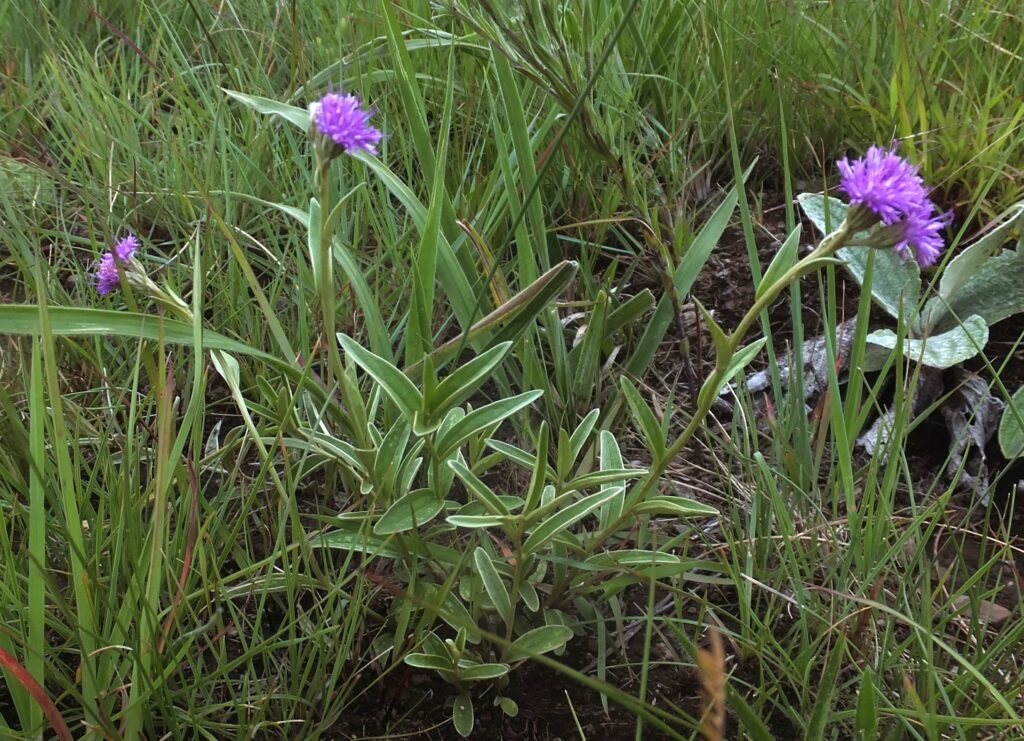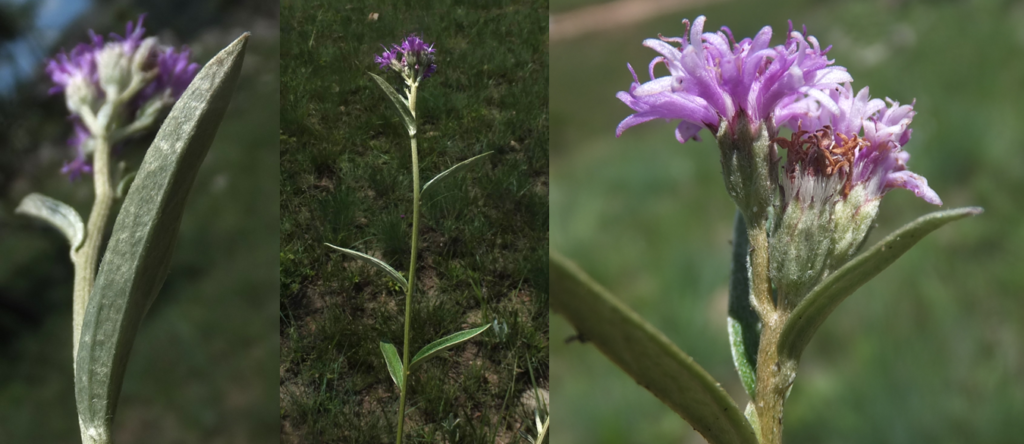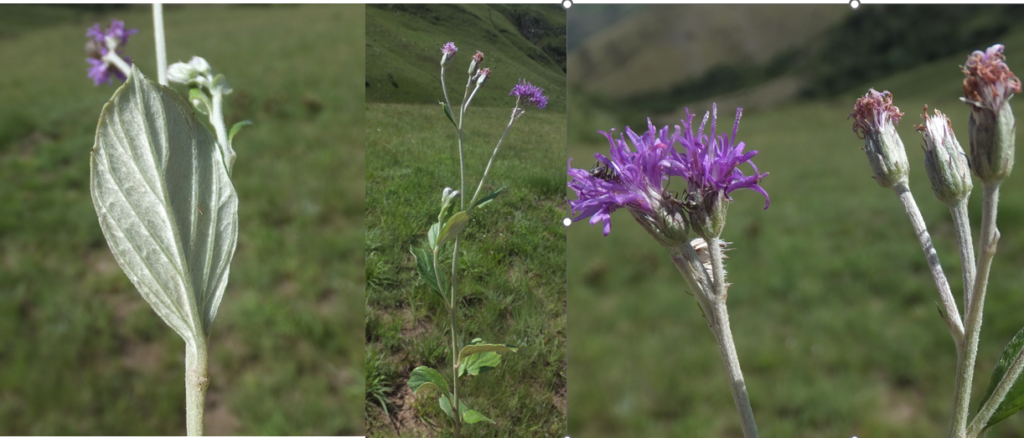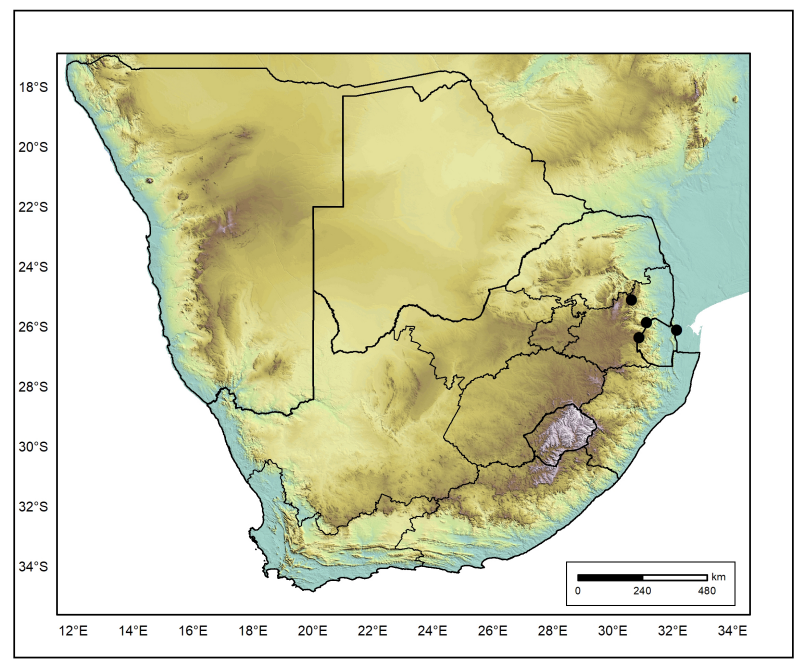
A small plant with a big name: Hilliardiela oligocephala var besteri
A new variety of near endemic plant from our neck of the woods has recently been described. It grows in a small area in Mpumalanga from the mountains between Barberton and in eSwatini. Paul Herman from the National Herbarium in Pretoria has scientifically described Hilliardiella oligocephala var. besteri in the journal Phytotaxa.
While botanising in the mountains east of Barberton in 2020, Delia Oosthuizen and a fellow member of the Mpumalanga Plant Specialist Group, Troos van der Merwe came across a Hilliardiella plant that could not be identified. Troos subsequently sent photos to the National Herbarium and Paul recognised it as an undescribed new species. He undertook to do the necessary to give the little chap a name. And this is how it became a variety of Hilliardiella oligocephala.
H. oligocephala was previously known as Vernonia oligocephala. Hilliardiella honours the botanist Dr Olive May Hilliard and the specific epithet, oligocephala means with a few heads which is in keeping with the flowers. Paul Herman also named it after the botanist S.P. (Pieter) Bester, a colleague and avid plant collector.

The newly described H. oligocephala var. besteri. Note the narrow leaves.
H. oligocephala var. besteri has a few, soft stems and grows up to 270 mm high. The most striking feature is its narrow and long leaves with three (up to five) veins from the base of the leaves. This distinguishes it from H. oligocephala var. oligocephala with its broader leaves that are pinnately veined. This means the leaf has a midrib with veins running parallel to it.

H. oligocephala var. oligocephala. Note the broad leaves.
The two varieties share the same grassland environment and if one does not look carefully the two can easily be confused. The besteri variety is limited to the mountains (see map) while the oligocephala variety occurs from the Barberton area towards the Eastern Cape coast.

Distribution map of Hilliardiella oligocephala var besteri in South Africa (Credit: Phytotaxa)
More information Phytotaxa 570 (1): 029–042 https://www.mapress.com/pt/ Copyright © 2022 Magnolia Press
